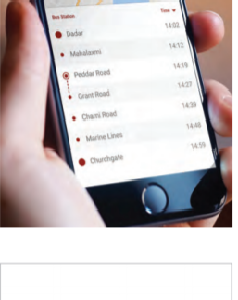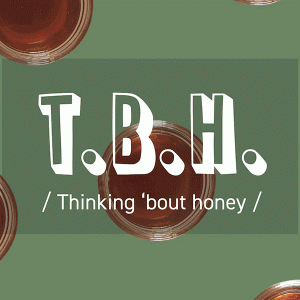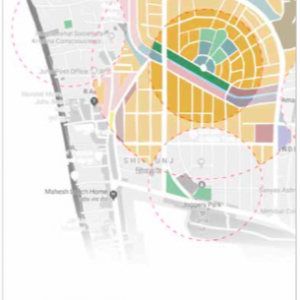In this digital era, where the highest amount of content consumed is in the form of videos, visual communication has been placed at the forefront of all other forms of communication.
Visual communication can be defined as the practice of using visual elements like gifs, short videos, infographics, or even PowerPoint presentations to help communicate more easily and efficiently.
Who doesn’t like surfing through Instagram reels? We know we do!
Someone that communicates via a visual medium has to have tremendous understanding of their target audience and graphic design elements. We’re here to tell you, with visual communication you can take your design experience a notch up higher. Want to know how? Stay tuned!

What are the advantages of Visual Communication?
There are several advantages to visual communication. Visual communication is significant as it saves the audience’s time making sure they easily grasp the message you are trying to convey. Some of these advantages are:
-
The fast and the furious, design edition
Fun fact about visual communication: According to statistics, the brain processes visual information 60,000 times faster when compared to text! Cool, isn’t it?
The format followed by visual communication uses more elements and designs to convey messages. It gets easier for the audience to quickly grasp the concept. The unique designs and creativity that is not seen so much in textual form helps gain the audience’s attention and makes the content more eye-catching.
Visually communicating your point helps conserve time and money. Visual communication is also important and impactful because people prefer to scan through designs than to read a text word to word.
If you want to create a lasting impact on your audience in less time, visual communication is the way to go.
-
Message received: clear as day
How many times have you wanted to check a particular email only to find yourself deep in an ocean of text? Innumerable? Same!
The main function that visual communication serves is that it makes it easier for your audience to process your message.
It is clearer, more direct, and intentional.
For instance, if you’re a company trying to explain your manufacturing process to help build trust amongst your consumers, your team’s graphic designer will use their creativity to explain this process visually so it can be easily processed by your audience.
Clear use of elements and designs as seen in visual communication makes sure the information is processed quickly and accurately by the viewer. When conveying your message in text there may be difficulties in providing context and tone to your information. This problem can be solved easily with visual aid.
There’s no scope for beating around the bush when it comes to visual communication and who wants to waste time reading so much on the internet? Not us.
-
Consistency is key
Perhaps the best part about visual communication is that it is easier to maintain consistency across platforms. It helps your audience grasp the visual information fast and associate it to the context and other information you’re trying to convey.
What we essentially mean by this, is that there are always specifications about a particular brand/fashion house’s identity. For example, there are particular fonts, logos, and colors that are used by designers while creating any form of art for them. These are also components of visual communication.
When one communicates the brand’s identity visually, the lasting impact it can have helps the audience associate these colors, fonts, or logos to the brand.

Take the fashion house, Gucci for example, the striped red and green printed band with the letter ‘G’ is symbolic of the brand. The minute you see the colors along with the letter in their particular font, your brain associates these things to the brand. Every design choice made by a visual design communicator can leave a significant impact on a brand’s identity.
-
Better retention
It doesn’t matter the kind of communication you’re going for, internal or external, the aim of any kind of communication, especially in design is retention.
Research has found that using visuals to help your audience remember certain things is more impactful than reading text.
As mentioned before, visuals are processed faster but here’s another fun fact about your brain, about 90% of all information that is transferred to your brain is visual in context. Go ahead, think about it!
Another important part of visual communication is communication design. Communication Design as a discipline is varied and broad in its scope as it involves students learning how to design web pages, motion graphics such as gifs and videos, or even video games for that matter. While a graphic designer uses visuals and graphics to communicate his/ her message, a communication designer is someone that strategically plans the design campaign and messages.
The link between the two is that a graphic designer puts into visuals the thoughts and strategies of a communicator designer.
Now that you know how visual and design communication can elevate your design experience, here are two of the challenges you must aim to resolve while communicating visually:
-
Does the average human being have the attention span of a goldfish? Find out now!
The very first challenge one can face in visual communication is a low attention span. Studies have proven that over the years, a human being’s average attention has significantly dropped.
While it was around 12 seconds in 2000, it got even lower, i.e 8.25 seconds in 2013, and in the year 2021, it has become 8 seconds, which is even less than a goldfish!
-
Aim: Memory retention or fleeting attention?
When visually communicating to your audience, one has to make sure the content is sticking to their memory.
Only the strongest visual content is remembered in case there are too many options for the audience to pick from. What this means is that when creating visual content, one must be careful and pick designs that are unique and creative if the aim is to create an impact.
Strong visual content can be easily recalled. We see this in schools and other education institutes where the use of graphs, pie charts, and other infographics are used to help students understand the information better, while also making sure it is remembered for a longer time.
Visual communication aims to solve these challenges with the help of creativity.
In Conclusion
Visual communication summarizes the information for its viewers and helps them connect with your content. It makes communication an easy two-way street. Effective visual communication has a creative appeal and at the same time is informational in nature.
Some visual communication strategies that one can use to create a long-lasting impact on their audience are:
- Use Data Visualization
- Use Shapes and Lines to portray relationships and flows.
- Use icons and symbols to make audience retention of information better.
- Use color to draw attention and attract the audience
So the next time you’re thinking of simply telling people your ideas, maybe try presenting them in designs.
How ISDI can help:
A student of design communication learns how to build a relationship between the visual and its viewer/ audience. Learn how to create an impact on your audience by taking up our course in design communication to level up your communication skills.

ISDI offers various design programs such as Fashion Design, Fashion Communication and Styling, Interior Design and Strategic Design, Communication Design, Product Design, and Management. Pursuing one of the degree programs, that is, Bachelors in Design (BDes) – 4 year program or Postgraduate In Design (PGDI) – 11 months program. Either of the programs are an alternative for a career in fashion and design.
The ISDI campus is located in the business district of Mumbai, the commercial center of India. ISDI consists of a curriculum that is based on that of the Parsons School of Design, experienced and industry-leading faculty, practical project-based training, all situated in a state-of-the-art campus. ISDI is just the right place for someone looking to start a career in design.










